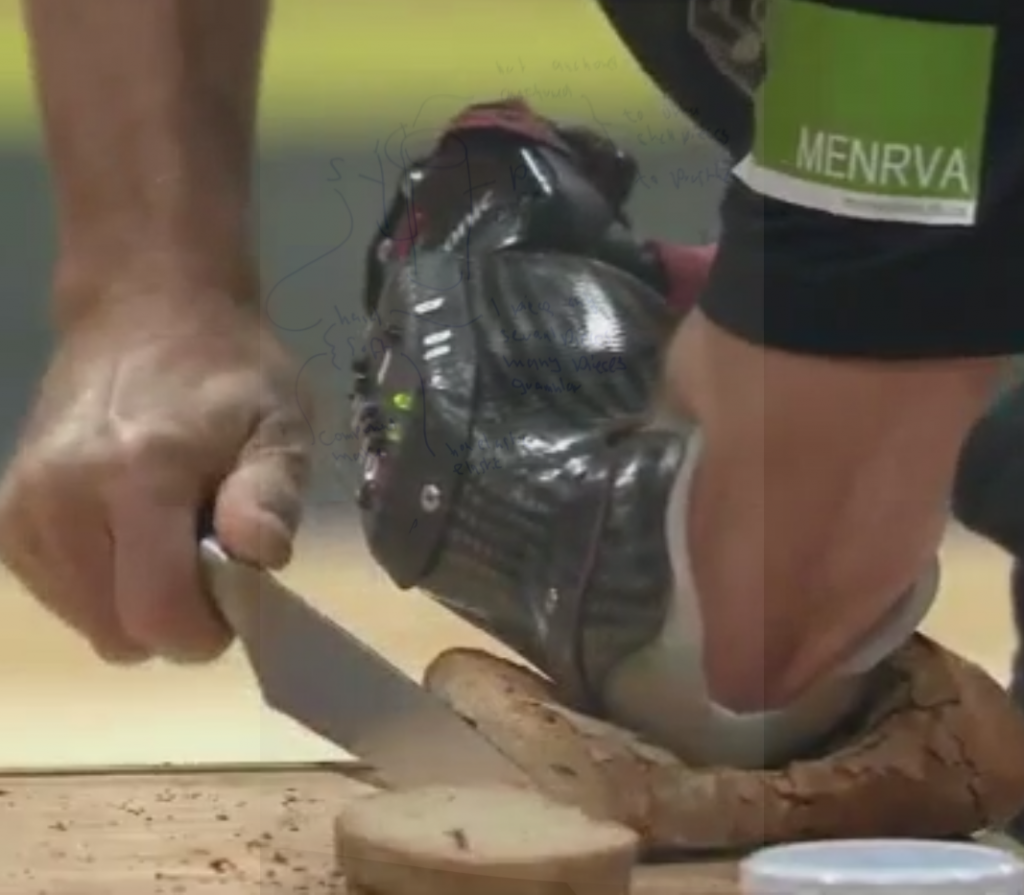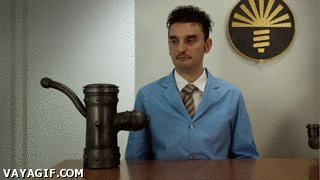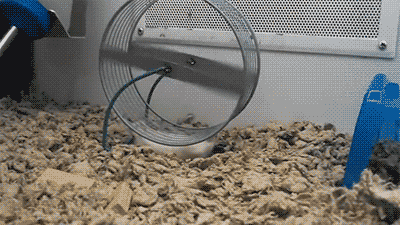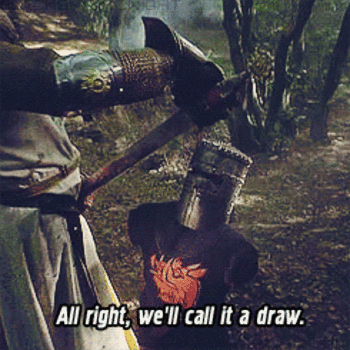There are a number of blog entries that trivialize, humorize, satirize or otherwise make medical drama more accessible, tangible or seemingly easy to bear.
Like, “the 80 things I learned after suffering a bee sting“, or, “12 things I learned through having a fever”. Even, “70 things I learned from having a (benign) brain tumor removed“
Those however only relate to persons. People are always, like, “are you a morning or a night person” and I am just, like, buddy, I am barely even a person.
For some reason, the average arm amputee may miss out on a range of these attempts.
(the average human body contains almost enough bones to make an entire skeleton) (average, meaning, that 100 people comprising 99 anatomically complete people and me will have a less than 100% chance of having all right-hand bones) (that is if you understand the concept of “average”)
Some very dedicated serious attempts at not being serious but humorous about arm amputee issues fail to actually entertain, and the “funny” points are not actually funny even if people really really make an attempt at being funny.
(to see the humor in existential threats you need to start by being extremely relaxed about existential issues yourself) (from that angle however it is just a flesh wound, a bit deeper than a scratch) (safe to stop reading here and switch over to watching the Muppet Show)
So, are arm amputation and suffering a recent haircut comparable? Yes, to a degree. I could have equally said, not really. Those, also, mean the same thing.
(How does an arm amputee with a totally high tech prosthetic arm cut a loaf of bread? He parks his tractor on top of it.) (image from Cybathlon 2016) (high tech “at work” – and, no, I did not make this up)
Before we go and start with the more funny jokes, there are a few indicators that we are dealing with a totally different subject matter than a recent haircut, that may be seen as show stoppers and that may turn out to be just a bit of a drag:
It is rather impossible to find “arm amputee ambassadors” that manage to repetitively and actually, authentically, and reliably take the edge off the fears and suffering of newly amputated arm patients. One reason for that is that the edge, the pain, the fears, and the manual handicap are unfortunately not unrealistic or unfounded. Also, and among other problems, “bionic” hands actually fail to deliver, they are indeed insanely overpriced but worse, they are largely useless gadgets. And you really get rashes and blisters from wearing prostheses. People really stare.
So, one starts with a number of fears and problems, sadly, confirmed.

Why are no arm amputees going to newly amputated patients for advice, so they can tell them they should stop acting like pussies, and start hauling ass without further ado, as if they were Real Men?
What is going on there?
Since when does it matter that gadgets do not function? Since when do Real Men rely on gadgets? Since when is a bit of pain in the way of pushing through? Since when is staring of others an actual problem?
Are we made from clay, like, brittle and water-soluble?
Why are there are no cool, positive, or otherwise constructive social connotations to go with arm amputation?
Why are there none?
Folk legends and movie industries practically always, with almost no exception, portray arm amputees as violent psychopaths. Is that because they think we are so funny and great that we urgently should be slowed down? Does the media industry for some obscure reason owe us their collective hatred, arrogance, and rejection? Also, should we owe them something else in return? What and why?
Humor may exist with arm amputation in particular, but, probably more in existential aspects.
(As a right below elbow amputee, at best, you suffer from significant manual disability, easily visible permanent disfigurement, permanent stump skin issues, significant phantom and stump pain, moderate pain and problems due to asymmetry and overuse, and significant social problems. So nothing to really worry about. At worst, you also fall into depression, injure your other arm, slide into not just significant but massive social problems, suffer not just significant but most severe phantom and asymmetry/overuse related pains, and cannot work at all. If you read this and chuckle because, hey, flesh wound, then we are talking humor. If not, you may be really having a hard time or (as a non-handicapped person) likely living on a different planet – which is alright, even that may happen to the best of us. Alienated yet?)
Arm amputation as a thing to undergo is really crass, to be slightly more upfront.
Like, in case you have not noticed. If anything, the degree to which it is crass is generally underestimated. But the terrifying aspects are not endless. The scope is narrow and the total damage usually is contained. Like the Pacific Ocean: large, but contained.
It requires some balls to dish out meaty one-liners about this, but before we do, why not consider aspects why, maybe, not all superficial humor is in order here, or why maybe we cannot find true laughter that sets us free and makes us genuinely happy.
(swim colleague: “JUST BECAUSE YOU ARE A CRIPPLE DOES NOT MEAN YOU CANNOT SWIM HARDER YOU LAZY ASS SON OF A BITCH!!!!”) (that one is actually really funny, trust me on that) (can you at least pretend to laugh, make a focused effort?)
(oops, not so funny now, is it, but it will have been the last time I really scared you here) (oops, AGAIN)
Particularly the most advanced new and experimental prostheses come with ever so totally exaggerated expectations. If nothing else (bwahaha), THAT may be their main problem (ROFLCOPTER).
(the iLimb prosthetic hand that is a notorious “object dropper” is advertised to hold expensive smartphones in what is portrayed as a rainy environment in a hiking situation; usually, on top of being not reliable to hold any object, myoelectric controls crap out when sweat starts to cover the arm stump and so many factors that preclude any responsible object holding are all jammed into one single dramatic advertising image. So the company objectifies us to morons that believe this type of claim.)
Promises of that magnitude have the effect that their users may experience some or even the most serious emotional crash landings. Or public humiliation.
True, that.
(Show me a man that tries to compare arm amputation and successful removal of an ingrown hair, and I show you a man that, ah, forget it, you know what, you go and search your own men if you must)
I am not bitter, but also, and that can be hard to swallow, I am not a person that suffers from any particularly high degree of anxiety or fear.
They usually like arm amputees to be servile, docile, humble, submissive, and cooperative at all times. That is the expected script to go with the imagery. This is narrative output from a few years of deep talks with a number of acquaintances and friends, actually.
One does not have to be a bit bitter or frustrated and yet, just laying down facts scares the shit out of folks though. It should not! You should feel educated, and definitely intrigued.
(after all, inspiration porn makes people stare at amputees and say “this inspires me”) (so go on, be inspired! now, hush!)
And yet, finding a way to tell specific insights other than matter of factually is something I find difficult.
It is a bit of a challenge to crawl back into a full life. The observations one makes are distinct to a degree where I often feel that I am living in a different world, on a different planet than non-disabled (or differently disabled) people. With that, arm amputee related fun is often a point-of-view or cross-cultural type fun.
May it be, that there are distinct factors of arm amputation to be described that play into this? May it be, that telling these is hard without instilling fear or bitterness? There is no reason to have fear or to be bitter. Just don’t do anything stupid or rash, and bear with me.
(What to you tell an arm amputee that is standing at a bus station? Nothing, he’s been told everything already)
1. Badass tumor gone.
When you permanently lose a badass tumor that lived inside your hand, you feel absolutely great about it, point-blank.
Not having a badass tumor in the hand any more must be one of the greatest feelings ever. I still feel that way.
Particularly when not looking at the hosed arm, and when not moving it. It beats all negative aspects (of which there are plenty). And one cannot weigh that one against any other.
With the phantom sensation and pain brimming away, your brain has the constant illusion that the hand is still there. That is not a problem.
With you just sitting or lying there reading or chilling, your brain has no idea of telling that the hand, wrist and part of the arm are really and actually gone. While not moving the stump, the pain caused by motion or touch contact, at least at first, is avoided (see below).
For these moments, you think the hand just hurts a bit and feels a tad numb, with pins and needles and the pain it has.
And with the tumor absolutely gone and a safety margin, you feel totally great and elated, and as if nothing can stop you.
That reality is brittle, because if ever you make the mistake of actually looking at your stump, you may experience an emotional free fall into the dark.
The emotional ground that you stand on – gone.
It really feels like the ground under your feet gives way and you slip into free fall. Actually, each and every time you look at it.
That free-falling feeling is distinctively uncomfortable if not nauseating. I have gotten up at night to go to the bathroom and then seen the hosed arm (I should say, my stump, but really it is “the hosed arm”) and went like, “DAFUQ is THAT”, emotional free fall. This, however, is not depressing – but a fact.
And it remains factual, neutral, slightly uncomfortable, very weird – but not depressing. After all, people go base jumping or roller coaster riding with the same prospect: having an emotional free fall, having the ground below the feet give way. In an airplane that lands during severe storms, one also may feel strained or nauseated but not necessarily depressed.
Even after eight years of this, I cannot say it makes me sad or depressed. That free fall is a wowoweewa moment. I never managed to really “get used” to that in a way that the free-fall becomes less or goes away. So then, so what.
I learned to not look at the hosed arm that much though. And I am still extremely happy that the tumor is gone.
Looking at me, you would have no idea.
From that aspect alone, it makes sense to wear a T-shirt saying, “it only looks like that”.
2. The hosed arm.
At first, it hurts, and not a bit or a wee bit or an ache or so but, like, cutting into raw flesh.
The sawed-off bone edges are really sharp, the sutured together tendons that run over these edges and the thin skin that covers that are not really any type of “protection”.
It may look like healing but, “it only looks like that”. Then, the stump has poor circulation, is definitely cold, as well as cold-sensitive and heals slowly and poorly.
(aww poor doggy awwww)
The stitched-up wound took me some 6 weeks to heal and hurt like hell for a few weeks. Then for a few months, it hurts like hell to push against it. You will want to catch objects falling using that hand, … oops, no hand, muscles contract even harder, but the falling object still not caught, because your brain really has that absentmindedly absent parked hand memorized there (see above). With all might, your brain tries to bring that hand back to life, if not by hard muscle contraction then by harder muscle contraction. And then you die from the massive extreme extra cutting sharp pain of tendons being pulled over sharp bone edges. You just die. One hard contraction you die, and after the first power plant of pain subsides, you will whimper for a few hours.
(After some 200 attempts you learn from experience – that is ok, lesser intelligent people would have required 2000 attempts)
Phantom pains are bad at first, and in my instance, they get worse over the years.
But your brain stops to care, and your brain loses interest. You may be fine, eventually.
Two years after the amputation, I started to use the hosed arm for driving and steering, and five years after the amputation I started to do my first pushups on the hosed arm on a hardwood floor. As if that ever was necessary. Things take time, like, a lot of time. Like give or take a decade.
(push ups)
And after a few years, you do not even care about that anymore. When I bang, lacerate, burn or cut my arm, then it may take some four or six weeks to heal. The stump is cold sensitive and cold and hurts all the time anyway. I would embrace any sensible approach to bring jokes, lightheartedness, and fun into this. After all, pain in all its different forms and shapes never failed to truly entertain!
Not “being an amputee” and not “being a chronic pain patient” is the key, dodging out of these socially imposed schemes helps.
So, my brain pushes that aside.
Pain loses importance, gradually – while it does not go away, one may become used to at least some of it. Instead of getting too upset over an injury, I just withdraw a little, and wait until it goes over.
3. The Social New normal.
Arm amputation may be a significant orthopedic and practical handicap but that absolutely pales in comparison to the social impediment that it constitutes.
And no, that cannot be fixed by wearing 3D prints or insanely overpriced anchors. Or participating in “research”.
(let us see if the people in the following picture have an idea of how to fix that)
People look at that hosed arm as if that was the item, the damage, that could be visually understood. Regardless of what is worn on it.
That is because, as an arm amputee, you are too far into posing a visual riddle to make superficially funny jokes.
(I once wore a really extremely expensive “realistic” looking prosthetic arm, the guy behind me in line at the gas station taps my shoulder and say, congrats, one almost does not recognize it as a prosthetic hand) (tip: a handicap not hidden is, um, a handicap not hidden?) (but, good one this one, really)
One more reason to wear that “it only looks like that” T-shirt.
You are an arm amputee and like that, people cannot but look *and* *not* understand.
Some offer to help. But mind you: help is offered in our societies these days as a “symbolic act”. Really, it is part of a social theater that you are supposed to play along with. It goes like this: they say, “call me for anything if you ever need help”. What they mean to say is, “I feel lost and without guidance right now and I do not know what to say. Let me see if offering help makes me feel better. (offering help) .. Ah, feels better. Now let me hope that guy never calls. He looks fairly confident so I may be safe after all”. What I understand in plain talk is “I am fearful, I feel repelled and never, ever, call me, for help or anything else”. To that (and to the verbally posed question) I thus cheerfully answer, “thank you so much for that honest and great valuable offer, you are truly the only generous person that I know”. All offers of help are like that. All of them, every single one of them. My (left) wrist has both ulnar and radial side unstable with torn structures, lots of edema, and extended pain after 1-2 kg of weight. That means that after lifting that amount of weight, my wrist pains for hours, and when I lift more, it pains for days. There are months when the wrist hurts 24/7, and it hurts more when I bend it or when I let it hang down. Finding a position to fall asleep is critically difficult. That is how I live on a different planet than you do. It is not with the risk of pain that I get up, it is a totally different reality. And that spells out as different social reality, too.
Explaining this to someone else never helps. I am not sure how these brains work, I honestly don’t. They don’t understand what I am saying, for sure. They don’t get it. Or maybe it is denial? But after explaining this, I am not sure what to answer when someone says, “let me know if you need help”. If someone else does not perform the lift act but I do, I *will* be in pain, for hours if not days, simple as that. I do not “need” help. But the damage to my wrist is a reason why lifting items or weights carves out my days in a totally different way than it does to other people.
I am maybe not lazy when I cannot push myself to “clean up” as much as others would want things to look like in my office or home office areas. I keep a logical order, and I keep things close so lift paths are minimized. Why you wonder. Been reading this text so far? But cleaning up a room, for example, means some 20 or 30 manipulations of weights in the 2-3 kg range and that means to push pain recovery out to at least 1 week from now. Without exertion or work out I cannot fall asleep.
And there is no way of telling, and, no way of understanding.
This goes quite deep. You will be alienated from the normal world of others without doing a single thing.
At the very same time, you experience very weird things. This combination of being restricted to see (visually) and not understand (mentally) has never stopped others to make you an actor in their fairytales, their own mental cinema, where you get to play the weirdest roles without even being asked. You get to play the role of an autist (people with a marked expression of personality disorders may be at particular risk to identify people that are not just as crass as “autists” rather readily), you get to play the role of outsider, strange person, and whatnot. I am not responsible for shit that happened to me, I did not administer the drugs at the hospital, I did not perform the surgery. I am not the person to blame for the shit others experience as weird twist due to their obvious inability to understand or look away. And yet, social situations are dominated by this every now and so often.
I had academic researchers truly ask me whether I wanted to be a stand-in live-example for their “Captain Hook” museum thingy. Like I was their ideal museum type exhibit? For a fairy tale bad guy? For their representative of “outdated”?
The list goes on, and so it comes that you find yourself misconstrued and distorted in a number of others’ representations that goes far and beyond the call of duty.
In fact, this is such an archetypical aspect of arm amputation, that history professors write research about this type of thing. It also delineates a clear border between “us” and “them” or as I like to say: one finds out one lives on a different planet.
So, if anything your jokes then can be of the “wrong universe” magnitude.
As in “is it air we are breathing”.
(You know how people will wiggle their fingers to tell the other person “say stop”, only to then show them the middle finger? I held up the hosed arm in such a situation and said, “say stop”. Greatest laughs, ever)
With the hosed arm, your old friends and relatives – particularly the far-right leaning of the family – are likely to drop off the radar real quick.
As quick as in *poof*.
After all, beauty *is* only skin deep, and with that, externality obsessing individuals also are expected to drop off the radar too. As in, *poof*.
Or, rather, to have you drop off their radar.
So if they do not pick up the phone, if they stop sending Christmas cards, if they conveniently forget appointments, then you know you have been dealing with the skin deep fraction of society which I guess to make up at least around 4/6th or so. Don’t worry though, you will find out who that is really fast if not instantaneously. Which is a good thing? They were never your really good friends.
(sorry we cannot make it for that appointment)
At the same fast rate, you will get to know some other estimated 1/6th of society, a bunch of people that pick amputees more or less specifically, to tell them how to behave, what to do, what to think. To impose their power phantasies over them.
Don’t worry though, if you don’t know who they are, you will soon find out as they will make sure to somehow nudge into your life, introduce themselves one way or another and commandeer you around. They always imposed themselves sooner or later. You cannot avoid that at least in its repetitive beginnings. So the stump also acts as “jerk attractor” – and you cannot embrace that aspect fast enough.
(flies around dung heap)
The higher art lies in getting these natural forces to work for you – getting these individuals to pay for your expenses, having them pull part of your cart for you, just as Edison had people push through his hard-to-push entrance door and by that, pump a few liters of water into his well.
You will want to make that work for you that otherwise works against you (but work, it will). Again, this is an existential riddle. That said, no one said one could not have a bit of fun with that despite at least everyone else not being in it for the fun.
Through the wonders of media stereotyping, arm amputees are generally seen as mentally unstable and physically aggressive if not outright murderous, and even though you may command a degree of mental stability in the order of magnitude of a Hoover dam, you will start out by having most if not all evenings and weekends as well as holidays for yourself. Because, hey, amputee scare. Boo!
And that is a good thing – time is money at least if you play your cards right.
You did add 4/6 and 1/6, right, to see where that leaves you at?
Yes, the non-discriminating human other 1/6 of society.
They are not anywhere to be found at first though.
Which then allows you to really spend time on stuff you never had time for.
You can learn stuff you never had time for. You can – and really should – move forward with projects you never moved forward with. You are also safe from “the specialists” themselves: I once attended a rehabilitation conference specializing in hand surgery, and a while later, another conference specializing in rehabilitation robotics; during each one, at least two seats on both sides of me were left empty despite the place being packed otherwise. To be left alone as visible disability generally scares off people is also a good thing once you can appreciate the calm and space this yields, and discuss wheelchairs and prosthetic legs as long as you want: nothing works just as effectively as an arm stump.
Eventually, you will find the rare and beautiful humans that are neither repelled nor obsessively attracted by what cannot become unimportant fast enough (the hosed arm, that is) and eventually, you will establish a social new normal. I cannot say that I feel depressed or bitter or sad about this – but it is the fact that this slalom is strenuous, requires social adaptation and the whole circus plays a relevant role that warrants its mention.
The future is far more yours than you ever figured it would.
Obviously, the road to finding your own dialogs, truths and insights is fraught with bad jokes, puns and confessions than span the range from the extremely funny to the utterly absurd.
However, slapstick and existential threats are far more close to reality than superficial cheap laughter which we yearn so much.
If nothing else, you may be in for a very entertaining ride, but if you are not careful, it can be really rough.
People would not think, just by looking at you, that you just very successfully worked a few projects, learned a few new things or whatnot, or that you just met the most wonderful person on earth, just by looking at you with that hosed arm, but didn’t we already learn, “it just looks like that”.
4. People stare.

And they stare at the hosed arm. Not at my face or at least not much. I am in no way talking about looks or glances. They really stare at the hosed arm and stare they do. When they pass me on the street. When they stand in line. At restaurants. Some stare for 10 or 15 minutes that feel like ages. Some stare for ages. Like if by looking they can somehow discover a deeper truth of some kind.
(discovering truth cartoon)
One guy stared at the hosed arm for a whole two hours, while we tried to have dinner a few years ago, me making grimaces at him or staring back did not cause him to let off. His eyes were glued to the hosed arm. Circus freak shows always had a lot going for them.
(Circus freak show)
One time, a friend of me stepped in and told folks off that stared with the subtle and discrete politeness of a nuclear bomb.
Another time, a guy stared at me in the changing room at a sports facility, relentlessly, so I burped all of the gas of my previously swallowed Coca Cola into his face which terminated that business relationship.
In the Walder shoe shop at the Glatt Zentrum, three (3) sales people would position themselves next to each other at a safe 7 meters distance from me to relentlessly stare at me while I tried on shoes.
In the trams and trains, people sitting across often stare, relentlessly.
I could go on and on here, just to give you more examples.
Respectful behavior is mutual and if the rest of society by and large is not up for it, why should I be. There are no polite words for it, and there are no excuses for their transgressions.
If schools, parents, research and media do not see it as their priority to implement respect and politeness, like, here and now and all the time, then the future will be different for all of us. Then, public transport remains being a bitch and shopping in stores remains being a bitch, too. Logic keeps being attractive for decision making so I am now a clear proponent of driving my car wherever I go, and of ordering online. I would probably not have discovered the extremely serene and respectful comfort of Aliexpress, Zalando or online stores in general in the same extent, were it not for the hosed arm. To avoid uncomfortable stares becomes second nature, dodging funny questions does, too. If there is a place that has no parking, I may not even consider going there.
Wearing a prosthetic arm does in no way diminish the visual impact of the hosed arm with regard to staring, unless the combination of distance blur and average visual acuity drops the prosthetic into the visual background for others.
Hence the importance of the “Appearance Test” that manufacturers and researchers never adopted so far. I guess they probably prefer to stare, too.
(“The prosthetic industry makes good prosthetic hands really”. And, funny to you? See, this is entirely funny from my view point, but this joke is made about people that take a lot of money for underperforming in a domain that very directly affects me) (so tell me, why should I not make a joke about this?)
5. Prostheses.
Good prosthetic arms are not. You get your first prosthetic arm, and not only does it greatly hurt on your wound, it causes instantaneous itchy bumpy burning rashes on your stump that drive your phantom pains nuts, its wrist jams within seconds, the hand jams within minutes, the cable rips and degloves within minutes, with a prosthetic technician answering *that* phone call with “ah, oh, what about an appointment in two weeks?” causing the whole illusion of “society doing something for you” to collapse ever so entirely.
You then sit in the tram, person next to you stares at the hosed arm (see above) and goes “there is *so much* being done these days for *people like you*” which you then can correctly answer with “um, nope”.
All that is not helped by the even actually horrific appearance of a first prosthetic test arm, nor by the fact that whatever they can do to restore a broken prosthetic arm, part wise, will be “more of the same”.
Whatever part of the socket or liner caused that rash will continue to cause that rash. Whatever mechanism blocked or wiggled will block or wiggle again. Whatever cable died within 4 days will die within 4 days again. Do not be fooled, you will run in circles just that much, that any caged hampster will lool like a soaring eagle to you.
You may even manage to get a myoelectric arm.
There, the glove dies by itself or with minimal usage, costing a few hundred bucks. After a week it dies again. Cable rips within 4 days, and within 4 days again. Each repair requires 2-3 hours of your good time, then 2-3 hours again. And again. And again. And again.
All the while you start to be able to see more clearly, and you start to be able to separate your own illusion and hope from actual nightmare and reality.
True fact: people ask me to present this as a fluffy joke.
(“they actually built a prosthetic arm, that is comfortable and that lasts along”) (I could laugh about this for many, many weeks) (it is only **really** funny, after you spent a total time of a few months in a prosthetist’s office waiting for repairs) (will you at least try to laugh with me, please?) (better now?) (spit a little to exaggerate the laugh, ok?) (funny now, right?)
(thank you for your very funny joke, I will have to write it down maybe someone will laugh when I read it out later) (thank you though)
You will realize sooner or later that you will not only not get your hand back, you will most likely not get any hand back.
And once you understand the ins and outs of the technology, you know that is never going to happen.
There is no getting back, as there is no hand.
There are empty promises, nightmares, rewind play scenarios with fragile parts that are insanely overpriced and the then seemingly dire option to live life without a prosthetic arm.
But don’t they say, “in chaos lies chance”.
And after two or three years, you may manage to improve your body powered arm design so it actually holds up for a useful amount of time, you comfort yourself to wearing a hook because at least this works for vacuum cleaning the house and all other real work. You will find good prosthetists that do help build a usefully sturdy arm, and you will actually manage.
You wear the prosthetic arm as little as possible so you can make it last longer and give the skin of your poor hosed arm some rest.
(elephant in porcelain house)
You slowly start to become so proficient living life without the prosthetic arm that while being significantly handicapped, you are less handicapped with the bare stump than with any of these prosthetic anchors on your hosed arm.
Through the miracles of what a brain does that is confronted with living in an arm amputated body, over a few years give or take, normal daily activities will become not a concern at all any more. Not at all. Not wearing a prosthetic arm is absolutely no problem at some point.
If you cannot carry enough items to walk once, you will not hesitate to walk a few more times, carrying items one by one. Your car will burst with empty bags, your household accumulates trays and baskets.
Intelligence *is* embodied, and while robotic researchers figured that out, it happens in humans on a far more extensive and comprehensive scale.
My left hand space now warps around, my handedness is significantly extended and distorted, I still identify new tricks and workarounds, automatically, and by having my brain entirely on autopilot.
You start to wonder what other people see in these crappy parts hyped around as “prosthetic arms” and make that a sociological hobby study focus.
Because after Sherlock Holmes – if there are no rational explanations for what they do, the rational answer is an irrational explanation.
To have technical researchers err around in irrational sociology mazes totally not understanding what on earth they are doing with these prosthetic hand projects never ceases to amaze – and again, they may toot their “technology” horn all day: also that “only looks like that”.
Now, to have disabled people walk around in public – including me as arm amputee – certainly seems strenuous at first for everyone that is involved.
But the general public also needs that as “education”, and you need that for exposure practice.
(exposure practice)

And while they certainly don’t know whom they are looking at when encountering an arm amputee, after a while, you start to really know what you are looking at. And that is more than one could ask for.
After a while, you start giving a real rat’s ass about who thinks what you should wear on your arm.
6. Doctors.
Ah, no, they do not know about below elbow amputations. Like, they think they see it so they understand it, like most regular people do.
But to be honest, most doctors do not know about arm amputation and what after it. Not even a tiny bit.
Arm amputation is rarer than a “rare disease” and doctors on any average have no clue about these either. I mean, come to think of it, this is entirely logical: you can only know what you see and discuss regularly, and an average doctor will meet 1 arm amputee in 20-30 years of medical practice, often not with a focus on that. So how should they know.
Again – I am not bitter or frustrated. This is a mere factual statement. And yet, it is relevant because it determines how, if, and when you get your stump and other disability related issue sorted out.
Arm amputation not only actually is a “rare disease”, but even more, so-called “orphan disease” or “rare disease” associations won’t accept arm amputees as part of their mission. So you are really left out in the rain, no lobby, and no lobby for having no lobby, virtually no doctors that understand leave alone treat associated problems.
I say this because these levels of establishing ignorance are the reason why things are that way. Attempts to remedy that are actively pushed aside. Attempts to change this are actively unprioritized. Arm amputation is intentionally overlooked. “We do not need to know about this, no Sir”.
(So one summer I called the medical hotline of my health insurance because the hosed arm was red and burned. And quite frankly, I told them that. I described the appearance – a reddening of the stump, a sharp burning feeling. They asked me all sorts of questions. Then they sent me to the doctor. When I hang up the phone the nature of that red burning skin damage dawned upon me: it was a simple sunburn. I had worn the prosthetic arm all summer, and the hosed arm was pale. Then with sudden sunlight exposure, the pale, untanned hosed arm had suffered more than the rest of my body, that is all there was to it. But no one knows about this.)
There is more that no one knows.
My right below elbow amputation causes a real strain on my cervical spine, on my left upper extremity joints, and so asymmetry and overuse are the actual long term issues that require me to wear a prosthetic arm that counterbalances the loss and that steps in not for the shee shee froo froo aspects of life but for the heavy ass shit that wrecks your asymmetric butt, scuse my French. So I need that prosthetic arm to balance out heavy and repetitive hard pushes, pulls and lifts – and not much else.
In other words, the main if not only reason to build a prosthetic arm for me is to fill that gap: to counterbalance and withstand heavy ass shit. So maybe there is a real reason why I am after “sturdy” and “robust” prosthetic arm design? To keep me out of harm’s way? To avoid a type of medical compliation related to asymmetry no one ends up really knowing about?
As doctors, prosthetic technicians, prosthetic part manufacturers and researchers neither know or know to care or ask, so logically also cannot understand, they will forever believe in “bionic” hand simulacra (that fall apart at the sheer sight of a single 1 CHF stamp, I kid you not) and that permanently die after 10 minutes of car wash (actually that one is documented) if not alone in the cupboard (that, too).
Which makes these “specialists” more of a liability and useless expense than a true help, with only a few exceptions. So you will pick your doctors carefully. A rare specialist may show their cards and start actually caring and researching. It means that it is you, that needs to tell the doctors, what they are dealing with, in a maybe unobtrusive or even upfront way, and, even if you are not sure yourself. It is you that needs to seriously emancipate. You may look like the amputee in need for medical care – but “it only looks like that”, really the specialist is (or will have to become) you and you need to know where to go in any case of problem. Admitted, that can be a challenge, but it can be done. It takes a bit of knowhow, understanding and fast reflexes, to start with. Then there is online support for advice and opinions.
Also, just visual inspection can be a problem for doctors.
And what can I say. It is just “as funny” as I wrote it down here. Mostly the correct adjective attribution is “boring”, but then, there is real unprecedented top notch quality theater grade slapstick: I once went to a neurologist for relevant problems of my (“non”-disabled – as they call it) left arm and wrist, and when she had finished asking questions about my left wrist she asked “what about the right wrist”? I was wearing a prosthetic hand with a really stock B-movie type silicone cover, in other words, nothing the slightest bit “fancy”, so I fell apart laughing for other reasons than mocking her, while she was so embarrassed. I laughed for existential reasons. Why NOT ask about my amputated wrist. After all, “it only looks like that”, a few levels deep.
Constantly realizing that doctors as well as most others have as much a clue about relevant life aspects for me does have an alienating feel about it. Sometimes I imagine myself walking around with a clown face. Sometimes I imagine other people walking around with a clown face. Rarely, these faces are unmasked. More often, there is nothing behind that face and we realize we are not living in a world of simulans but simulacra. You can laugh but, admitted, that laugh is hollow. Not that we hate the sound of drums (ever considered these are usually hollow, too).
And every now and then, you will encounter a real face, and then the sun goes up, for a very long time.
7. Manual ability.
We will first consider the statement “with the dominant hand gone and just a forearm stump, you cannot do much any more”.
That, at least, is what is widely thought.
Really, it is a bit more complicated: for everyday activities or ADL (activities of daily living) that statement is plain wrong. With a right below elbow amputation, everyday activities are mostly easy, almost too easy, whereas many cultural artifact aspects – such as actively participating in cocktail parties, shaking hands (with a right hand absent) or steep downhill biking, are gone, at least at first. So, work, preparing food, cleaning up, all is no real problem.
But Martinis with shrimp food bits is a real manual problem.
Can you hold this, please. Don’t get upset because the greasy bits were greasy. Hamburgers, oops.
This is not made better by the fact that delicate skin is, and remains, delicate. My forearm stump skin is like the skin on any forearm, like your forearm maybe.
If you think how it feels to handle rough, edgy or sharp items with the delicate thin skin on the inside at the middle of your forearm, you may likely cringe. I always cringe. You do not get used to the feeling on the forearm, but very comforting, if at all you get used to the cringe. The perceptions and feeling of pushing a raw tender painful stump skin into any iron frying pan, or cardboard box, to hold, stabilize, or lift an item, is and remains very uncomfortable – but that does not mean that it cannot be done.
Generally, brute force and insensitivity go a long way. Voight Kampff test alert – if you ask me to behave maximally humanly, which contains a readiness to inflict forces against me that make me (and by extension you) inhuman, then there is a deeper social problem then the “just lift that will you” problem. Luckily you don’t know about that.
A few hours into wearing a “bionic” prosthetic arm, for very light office work. Abrasions and blisters, y’all.
The following images show the outcome of moving a few items using the stump. No prosthesis was worn. A mechanical friction rash is what this is.
Push a cardboard box edge or corner into your forearm.
Get a trash bag zipper to cut into your forearm.
No one said that would be comfortable or nice. It is not comfortable or nice.
But on the level of basic daily activities, you will accept that you now deliver push, pull and carry forces with a delicate forearm stump (even eight years later it feels uncomfortable) but you will manage, and while I cannot make a joke to make you find that funny, after a few years you totally stop caring or worrying. You lose all respect with regard to the delicate forearm skin.
I just use the hosed arm up, and as the skin was never made for that type of exposure, there is a friction rash, that escalates the phantom pains, that escalates the shoulder and neck pains and then what: nothing.
No one cares, no one fixes it, no one gives a damn, no doctor sees it, “it only looks like that” (this *is* the ultimate joke, I tell you) and so I do is wait – and it passes.
The degree to which you let stuff like that pass is considerable.
So, you have neuropathic pain? Shit on it! And even though others may find that not so funny, I do: I got used to severe neuropathic and skin pain so much that when I contracted shingles (Herpes Zoster) one day I slept right through it. Ha, ha. Remember “the doctors”? Did not even consult one for pain medication there. Ha, ha.
On the level of cultural artifacts, however, you cannot perform, like, at all.
Shaking hands never works, not will it ever work. Advanced card tricks, who knows. Cutting hair using scissors? Hard, very hard.
And, who gives a damn.
I made it through a badass tumor and that beats all other aspects, still does.
People react negatively to shaking my stump (does not feel or look right), my prosthetic hand (not authentic, too artificial) or my prosthetic hook (they sure do not like that). To this day I don’t know what comfort people get out of trying to shake my right hand, but, chill, neither to they.
So, you look at the hosed arm and you think you understand what you see. “It only looks like that”, and you don’t even get that joke. Wrong and funny on so many levels.
Reminder there are (C) copyrighted images in post

















































